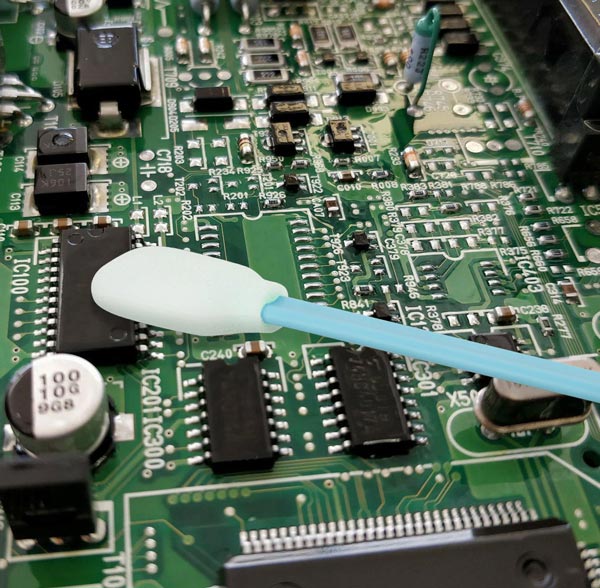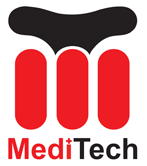
In der Elektronikfertigung, Reinraum-Tupfer sind unverzichtbare Werkzeuge, die die Qualität und Zuverlässigkeit elektronischer Komponenten und Geräte sicherstellen. Angesichts der heiklen Natur dieser Branche, Beim Umgang mit empfindlichen Bauteilen kommt es auf Präzision und Sorgfalt an. Dieser Artikel befasst sich mit den entscheidenden Faktoren, die bei der Auswahl der besten Reinraumtupfer für die Elektronikfertigung zu berücksichtigen sind, Hervorhebung der Bedeutung der Produktqualität, Sauberkeit, und Kompatibilität.
Verständnis der Elektronikfertigungsumgebung
Die Elektronikfertigung erfolgt in kontrollierten Umgebungen, sogenannten Reinräumen. Diese speziellen Räume sind darauf ausgelegt, die Partikelkontamination zu minimieren, statische Elektrizität, und andere potenzielle Gefahren für elektronische Komponenten. Die strengen Sauberkeitsstandards von Reinräumen sind von entscheidender Bedeutung, da selbst kleinste Partikel oder Verunreinigungen zu Produktdefekten und -ausfällen führen können.
Bedeutung von Reinraumtupfern
Reinraumtupfer spielen eine entscheidende Rolle bei der Montage und Wartung elektronischer Komponenten in diesen makellosen Umgebungen. Sie werden für verschiedene kritische Aufgaben eingesetzt, einschließlich:
- Reinigen von Oberflächen: Tupfer entfernen effektiv Staub, Rückstände, und Verunreinigungen, die den Herstellungsprozess oder die Produktqualität beeinträchtigen können.
- Auftragen von Lösungsmitteln: Sie ermöglichen das präzise Auftragen von Reinigungslösungen, Klebstoffe, und andere Chemikalien, die bei der Herstellung unerlässlich sind.
- Probenahme: Zur Probenahme und Qualitätskontrolle werden Tupfer verwendet, um sicherzustellen, dass sowohl die Umgebung als auch die Komponenten strenge Sauberkeitsstandards erfüllen.
Wichtige Faktoren, die bei der Auswahl von Reinraumtupfern zu berücksichtigen sind
Die Auswahl der richtigen Reinraumtupfer ist entscheidend für die Aufrechterhaltung der Integrität elektronischer Komponenten. Hier sind die wichtigsten Faktoren, die es zu berücksichtigen gilt:
Materialzusammensetzung
Das Material der Tupferspitze ist entscheidend. Es sollte sein:
- Fusselfrei: Um zu verhindern, dass winzige Fasern verloren gehen, die Komponenten verunreinigen könnten.
- Nicht scheuernd: Um Kratzer oder Beschädigungen empfindlicher Oberflächen zu vermeiden.
- Partikelfrei: Zu den gängigen Materialien gehört Schaumstoff, Polyester, und Mikrofaser, aufgrund ihrer minimalen Partikelerzeugung ausgewählt.
Größe und Form
Größe und Form des Tupfers sollten an die jeweilige Aufgabe angepasst sein:
- Kleine Tupfer: Ideal für die Präzisionsreinigung und Probenahme.
- Große Tupfer: Besser zum schnellen Abdecken großer Flächen.
Spitzenkonfiguration
Tupferspitzen gibt es in verschiedenen Konfigurationen, wie zum Beispiel:
- Spitz: Für präzise Reinigung in engen Räumen.
- Gerundet: Zur allgemeinen Reinigung.
- Gemeißelt: Zum Abstreifen von Rückständen oder zum effektiveren Auftragen von Lösungen.
Kompatibilität
Stellen Sie sicher, dass die Tupfer mit den in Ihrem Herstellungsprozess verwendeten Lösungsmitteln und Chemikalien kompatibel sind. Einige Materialien können sich zersetzen oder mit bestimmten Substanzen negativ reagieren, ihre Wirksamkeit beeinträchtigen.
Geringe Partikelerzeugung
Tupfer sollten so gestaltet sein, dass die Partikelbildung minimiert wird, Dies ist in Reinraumumgebungen von entscheidender Bedeutung, in denen selbst kleinste Partikel zu Defekten führen können.
ESD (Elektrostatische Entladung) Kontrolle
Um elektrostatische Entladungen zu verhindern, sind Tupfer mit antistatischen Eigenschaften unerlässlich, die empfindliche elektronische Bauteile beschädigen können.
Verpackung
Die Verpackung der Tupfer sollte sauber sein, versiegelt, und in der Lage, ihre Sauberkeit bis zum Gebrauch beizubehalten. Durch die richtige Verpackung wird sichergestellt, dass die Tupfer nicht kontaminiert und sofort anwendungsbereit sind.
 Reinraum-Schaumtupfer, Polyester-Tupfer, Hersteller von Druckerreinigungskits – MediTech
Reinraum-Schaumtupfer, Polyester-Tupfer, Hersteller von Druckerreinigungskits – MediTech